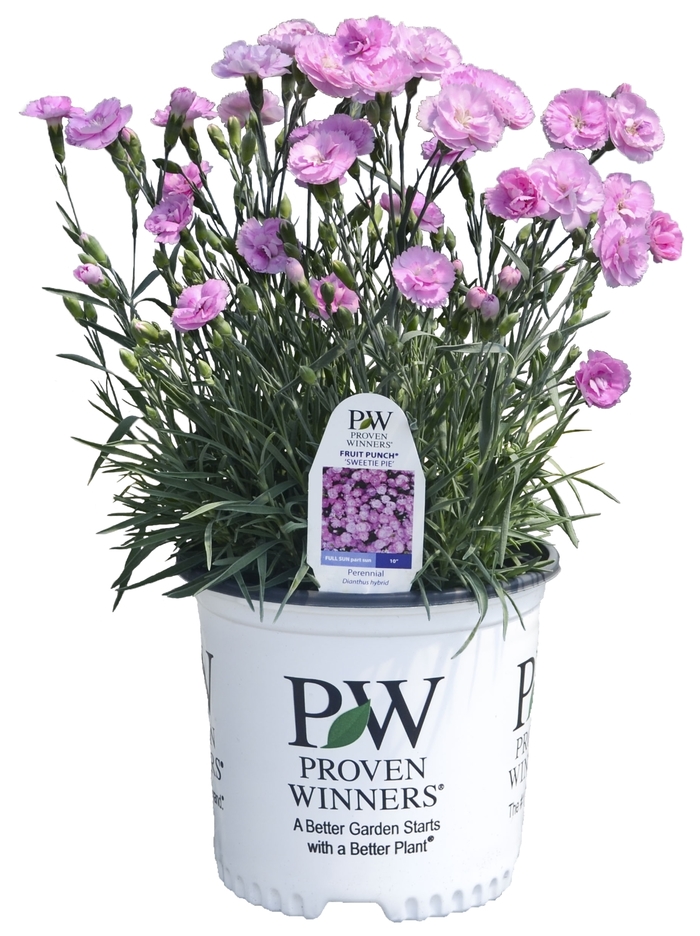« Previous Plant | Next Plant »
Dianthus (Pinks)
Fruit Punch® 'Sweetie Pie'
USPP27989, Can PBRAF
‘Sweetie Pie’ is the perfect choice if you tend to gravitate toward pastel colors for your garden. The true pink, semi-double flowers are 1¼-1½” wide with a subtle darker pink eye. ‘Sweetie Pie’ is incredibly floriferous: the flowers totally cover the silvery blue-green foliage when it’s in bloom. Plants have good heat and humidity tolerance. Flowers appear in early summer, and a quick shearing after flowering will encourage them to rebloom in early fall.
- » Semi-double, true pink flowers
- » Low mound of silvery blue-green foliage
- » Use it to edge sunny borders and pathways
Dianthus grow best in loose, well-drained, neutral to slightly alkaline soils. Lime can be added to the soil if it is naturally acidic to raise the pH. Dianthus can be grown in full sun or part shade, but the foliage will not be as lush and fewer flowers will be produced if it is grown in hot, dry areas. Regular watering during prolonged dry spells will be necessary. However, they are tolerant of short periods of dryness. Do a thorough clean-up in the fall to prevent pest and disease problems, and add a layer of mulch to protect the evergreen foliage. As soon as the weather begins to warm up, remove all of this mulch to prevent crown rot.
- Height
- 8 - 10 in
- Spread
- 16 - 20 in
- Zone
- 4-9
- Color
- Pink
- Categories
- Perennial
- Breeder
- Proven Winners
- Tags
- Attracts Butterflies; Border or Bed; Container; Drought Tolerant; Fragrant; Heat Tolerant
Check back soon for additional information on Fruit Punch® 'Sweetie Pie'.
Dianthus grow best in loose, well-drained, neutral to slightly alkaline soils. Lime can be added to the soil if it is naturally acidic to raise the pH. Dianthus can be grown in full sun or part shade, but the foliage will not be as lush and fewer flowers will be produced if it is grown in hot, dry areas. Regular watering during prolonged dry spells will be necessary. However, they are tolerant of short periods of dryness. Do a thorough clean-up in the fall to prevent pest and disease problems, and add a layer of mulch to protect the evergreen foliage. As soon as the weather begins to warm up, remove all of this mulch to prevent crown rot.
